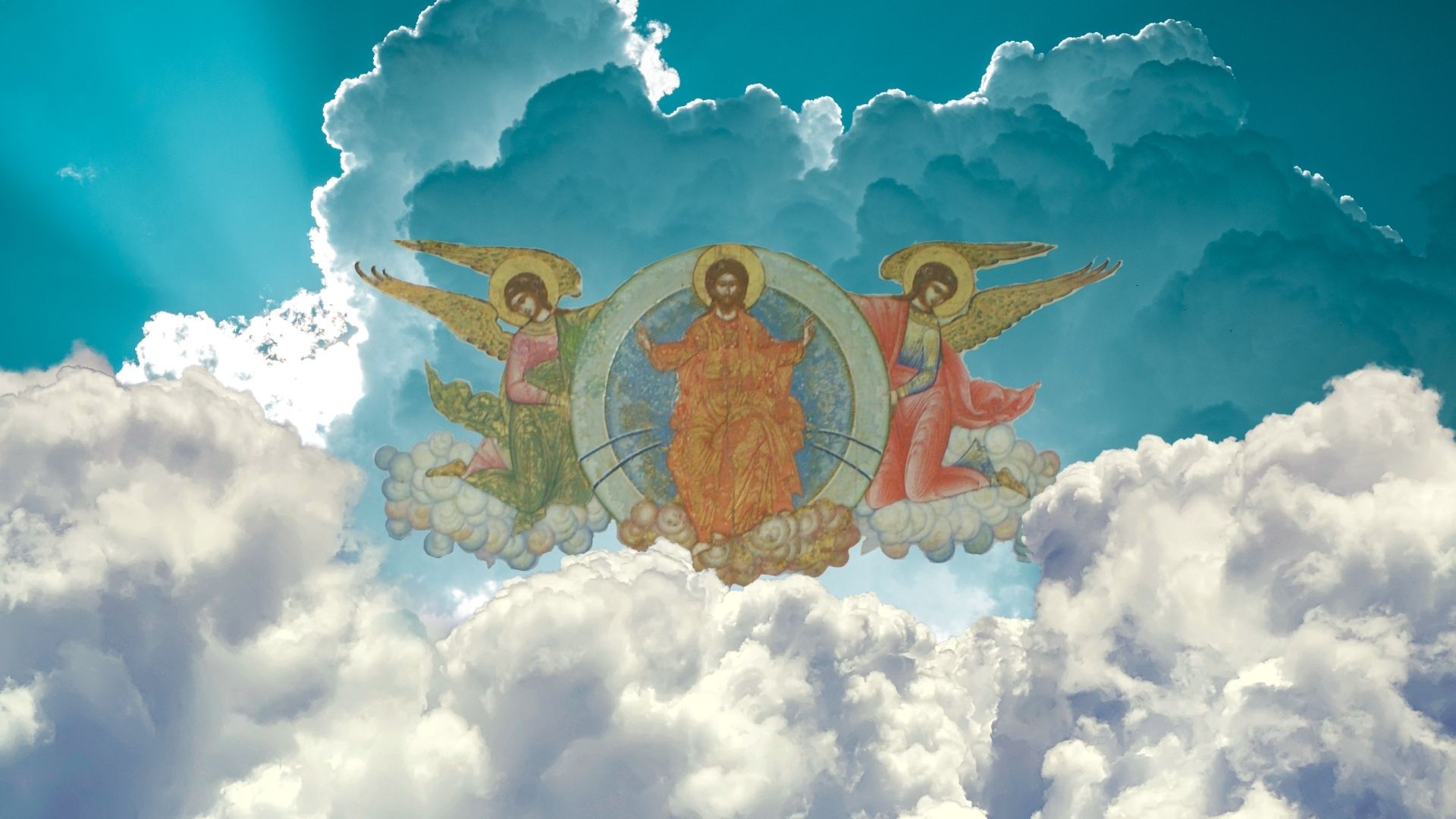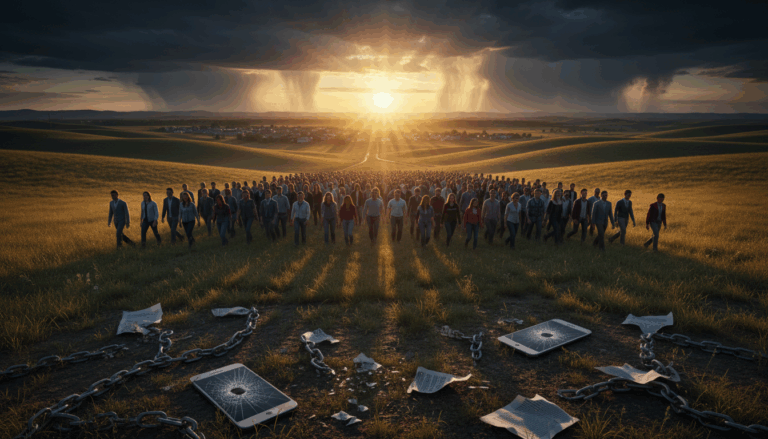Coming Upon the Clouds of Heaven in Judgment (Dan. 7:13-14; Mal. 3-4)
Introduction
In Part 1 of our series, we looked at the modern Zionist or “Jewish” objection to Christianity around this time of year (Christmas) – “the OT nor Jewish tradition teaches the concept of a Messiah that is divine or has eternal origins. Christianity is purely made-up religion completely foreign to Jewish thought and theology.” We of course were able to demonstrate that Jews indeed expected a divine Messiah from Isaiah 7:14; Isaiah 9:6-7 and Micah 5:2.
Here in Part 2, we continue demonstrating the Jewish expectation in a divine eternal Messiah, except now we turn our attention to Second Coming passages. Here we encounter another “Jewish” objection on the alleged failure of Jesus to come upon the clouds of heaven in His contemporary generation:
- “At first, Christians expected that this “second coming” would come very shortly, and prayed that they would see it in their lifetime. When their prayer was not answered, they began to hope that it would come a thousand years after Jesus’ death. This was the millennium or “thousand year kingdom.” Finally, after a thousand years passed and Jesus still had not returned, they postponed his “second coming” to an indefinite time.
- We therefore see that the early Christians were forced to radically alter the Jewish concept of the Messiah in order to explain Jesus’ failure. This, compounded with the pagan influence in the early church, gave birth to a Messianic concept totally alien to Judaism.”303
- “…there is a major historical dilemma which seems to explain why the doctrine of the second coming was invented. H. M. Waddams, who was the Residentiary Canon of Canterbury Cathedral in 1968, wrote a book [The Struggle for Christian Unity, NY, 1968, p. 10] explaining why it took so many years for the Church to get organized into a formal, organized group. His answer is that even though verses such as Matthew 24:34 may mean that Jesus is referring to a future generation, nonetheless most of the early Christians thought that the simple interpretation was correct. It corroborated the impressions that they had of the message of Jesus, and so they thought that Jesus would return within their own lifetime. After all, Jesus did say, in Matthew 16:28, “Verily I say unto you, there be some standing here which shall not taste of death, till they see the son of man coming in his kingdom.” However, after many years went by, and the generation that lived in Jesus’ generation had all died, it became rather apparent that Jesus would not reappear in the near future. The doctrine was therefore changed so that his reappearance was not necessarily going to be in the near future.”[1]
The coming of the Divine Son of Man in Daniel 7:13-14 is Jesus the Messiah
“I saw in the night visions, and behold, with the clouds of heaven there came one like a son of man, and he came to the Ancient of Days and was presented before him. And to him was given dominion and glory and a kingdom, that all peoples, nations, and languages should serve/worship him; his dominion is an everlasting dominion, which shall not pass away.” (Dan. 7:13-14)
Referring to Daniel 7:13 in the Babylonian Talmud, Tractate Sanhedrin Folio 98a (AD 400-600) we read:
“…it is written, in its time [will the Messiah come], whilst it is also written, I [the Lord] will hasten it! — if they are worthy, I will hasten it: if not, [he will come] at the due time. R. Alexandri said: R. Joshua opposed two verses: it is written, And behold, one like the son of man came with the clouds of heaven whilst [elsewhere] it is written, [behold, thy king cometh unto thee …] lowly, and riding upon an ass! — if they are meritorious, [he will come] with the clouds of heaven; if not, lowly and riding upon an ass.”
One Rabbi admits both can be fulfilled together,
“It may be suggested that these are not mutually exclusive alternatives. Rather, Messiah will be both powerfully exalted (‘on clouds of heaven’) and humbly self-effacing (‘a poor man riding a donkey’).”[2]
Jesus applies both OT passages to His redemptive work for Israel through His riding on a donkey – a depiction of His humility and rejection as the suffering servant which begins the atoning and redemptive process – and then Him coming a second time out of the heavenly temple as the High Priest and King coming upon the clouds with salvation and judgment in the events of AD 67 – AD 70.
Jewish Scholar Alan Segal, commenting on R. Akiba and R. Yosi the Galilean disputing over the meaning of the passage, writes:
“These two rabbis were perplexed by the seeming contradiction in the verses. In one place, more than one throne is indicated by the plural form of the noun. In another place “His (God’s) throne was fiery flames” implies only one throne. Does this mean that the ‘son of man’ in the next verse was enthroned next to God? Rabbi Akiba (110-135 C.E.) affirms the possibility, stating that the other throne was for David. Akiba must be identifying the ‘son of man’ with the Davidic messiah. Nor was R. Akiba alone in the rabbinic movement in identifying the figure in heaven as the messiah. There is some evidence that Judaism contained other traditions linking these verses in Daniel with the messiah.”[3]
Another Jewish scholar, Jacob Neusner, addresses the ‘older’ traditions in this way: “We focus upon how the system laid out in the Mishnah takes up and disposes of those critical issues of theology worked out through messianic eschatology in other, earlier versions of Judaism. These earlier systems resorted to the myth of the Messiah as savior and redeemer of Israel, a supernatural figure engaged in political-historical tasks as king of the Jews, even a Godman facing the crucial historical questions of Israel’s life and resolving them: the Christ as king of the world, of the ages, of death itself.”[4]
Orthodox Jewish scholar Daniel Boyarin writes on the characteristics of Daniel 7 and the development of Jewish and Christian thought:
“What are these characteristics?
- He is divine.
- He is divine in human form.
- He may very well be portrayed as a younger-appearing divinity than the Ancient of Days.
- He will be enthroned on high.
- He is given power and dominion, even sovereignty on earth.
All of these are characteristics of Jesus Christ as he will appear in the Gospels, and they appear in this text more than a century and a half [sic] before the birth of Jesus. Moreover, they have been further developed within Jewish traditions between the Book of Daniel and the Gospels. At a certain point, these traditions became merged in Jewish minds with the expectation of a return of a Davidic king and the idea of a divine-human Messiah was born. This figure was then named ‘Son of Man,’ alluding to his origins in the divine figure named ‘one like a Son of Man/a human being’ in Daniel. In other words, a simile, a God who looks like a human being (literally Son of Man) has become the name for that God, who is now called ‘Son of Man,’ a reference to his human-appearing divinity…”[5] And:
“There are many variations of traditions about this figure in the Gospels themselves and in other early Jewish texts. Some Jews had been expecting this Redeemer to be a human exalted to the state of divinity, while others were expecting a divinity to come down to earth and take on human form; some believers in Jesus believed the Christ had been born as an ordinary human and then exalted to divine status, while others believed him to have been a divinity who came down to earth. Either way, we end up with a doubled godhead and a human-divine combination as the expected Redeemer.*…”[6]
Ancient Jews described the anticipated Messiah with the title “he of the clouds.” Boyarin, referring to other scholars such as J.A. Emerton, points out that any good Jew knew that only Yahweh himself rode upon the clouds of heaven in judgment:
“Clouds–as well as riding on or with clouds–are a common attribute of biblical divine appearances, called theophanies (Greek for ‘God appearances’) by scholars. J.A. Emerton had made the point decisively: ‘The act of coming with clouds suggests a theophany of Yahweh himself. If Dan. vii. 13 does not refer to a divine being then it is the only exception out of about seventy passages in the Old Testament.’ “…As New Testament scholar Matthew Black puts it bluntly, ‘This, in effect, means that Dan. 7 knows of two divinities, the Head of Days and the Son of Man.’ Those two divinities, in the course of time, would end up being the first two persons of the Trinity.”341
“Ancient Jewish readers might well have reasoned, as the Church Father Aphrahat did, that since the theme of riding on the clouds indicates a divine being in every other instance in the Tanakh (the Jewish name for the Hebrew Bible), we should read this one too as the revelation of God, a second God, as it were. The implication is, of course, that there are two such divine figures in heaven, the old Ancient of Days and the young one like a son of man.”[7]
“The Messiah-Christ exists as a Jewish idea long before the baby Jesus was born in Nazareth. That is, the idea of a second God as viceroy to God the Father is one of the oldest theological ideas in Israel. Daniel 7 brings into the present a fragment of what is perhaps the most ancient of religious visions of Israel that we can find…”[8]
The presentation of the Son of Man to the Ancient of Days in Daniel 7:13 is perhaps a reference to Christ in His Parousia delivering up the kingdom (“the saints”) to the Father (“the Ancient of Days”) in AD 70. Then cometh the end, when he shall have delivered up the kingdom to God, even the Father; when he shall have put down all rule and all authority and power (1 Cor. 15:24).
But, again, my preferred interpretation is similar to that of F.F. Bruce. According to the old Greek LXX of Daniel 7:13, the Son of Man came “as the Ancient of Days” on the clouds of heaven, not “to the Ancient of Days.”[9] This translation is in harmony with verse 22, which says that it was the Ancient of Days Himself who came in judgment and gave the saints the kingdom. It is also important to point out that John in the book of Revelation alludes to Dan. 7:9, 13 in his description of Christ as being both the Son of Man who comes on the clouds to judge those who had pierced Him (first century Jews) and as the eternal Ancient of Days in Revelation 1:7, 13-17. The context is developing Christ’s future “soon” (Rev. 1:1) Second Coming, not His ascension or a future to us world-ending event. Christ came upon the clouds of heaven as God had come upon the clouds in the OT – through invading armies (Assyrians, Babylonians, Romans). For more on this see my series on Matthew 24 and Revelation Fulfilled in AD 70 or Future?, where we dig into these texts in more depth.
Messiah would be worshipped by the nations – and is!
Before leaving Daniel 7:13-14, it should be noted that this One likened to the “Son of Man” and “Ancient of Days” coming on the clouds of heaven is “worshiped” (vs. 14 NIV – the original Aramaic is pelach; some translations render the word to mean divine “service”). In establishing the meaning of a passage or word in a particular text, we need to examine its usage elsewhere in the same book. Everywhere in Daniel, pelach is used of divine service or worship. For example, it’s used of false gods in Daniel 3:12. In Daniel 3:17-18 we are told that Shadrach, Meshach, and Abednego only gave divine service and worship to the only living God and would not render divine service and worship to Nebuchadnezzar’s false gods. In Daniel 3:28 Nebuchadnezzar gives praise to their God and states that they “yielded up their bodies rather than serve and worship any god except their own God.” Daniel 6:16-20 describes Daniel’s divine service to the only living God continually, given in hopes that God would deliver Daniel from the den of the lions, which He did. Daniel 7:27 states that when the Ancient of Days would come (cf. vss. 13-14, 22) to give possession of the kingdom to the saints, “all rulers will worship and obey him.”
Malachi 3 – 4 The “Lord” / “Sun of Righteousness” would burn the Second Temple in AD 70
“Behold, I send my messenger [John the Baptist in the spirit and power of Elijah – Mal. 4:5], and he will prepare the way before me. And the Lord [God / Messiah] whom you seek will suddenly come to his temple; and the messenger [God / Messiah] of the covenant in whom you delight, behold, he is coming, says the LORD of hosts. But who can endure the day of his coming, and who can stand when he appears? For he is like a refiner’s fire and like fullers’ soap. He will sit as a refiner and purifier of silver, and he will purify the sons of Levi and refine them like gold and silver, and they will bring offerings in righteousness to the LORD. Then the offering of Judah and Jerusalem will be pleasing to the LORD as in the days of old and as in former years. “Then I will draw near to you for judgment. I will be a swift witness against the sorcerers, against the adulterers, against those who swear falsely, against those who oppress the hired worker in his wages, the widow and the fatherless, against those who thrust aside the sojourner, and do not fear me, says the LORD of hosts” (Mal. 3:1-5).
In our passage, John the Baptist is the first messenger, and according to John the Baptist’s eschatology found in Matthew 3:7-12 there was an “about to come” “wrath” of fire that was to come upon the Pharisees with His winnowing fork and ax already in His hands and ready to strike. “THE LORD,” and the second messenger, is referring to God / Messiah. Premillennial Zionist Michael Brown writes of rabbis seeing this as Messianic:
“According to the famous medieval Jewish commentaries of Radak (David Kimchi) and Mesudat David, “the Lord” refers to none other than “King Messiah.” However, neither of these commentators took sufficient note of the fact that the Messiah was to come to the Temple that stood in Malachi’s day (and note also that it is called “his Temple”—pointing clearly to the divine nature of the “Lord” spoken of here). I ask you, did this happen? If it did, then the Messiah must have come before the Temple was destroyed in 70 C.E.; if not, God’s Word failed.”[10]
According to Daniel 7:13-14 and Daniel 9:24-27, Jews understood that Messiah had to come not just before the second temple’s destruction in AD 70, but He would be very active in its destruction – coming upon the clouds to desolate it! This is what is deliberately missed by Futurists and Premillennial Zionists such as Dr. Michael Brown. The coming of God/Messiah in the judgment of Malachi 3:1-5 is further described in the next chapter as the “great and awesome day of the Lord” with Him coming in a judgment of fire as the “Sun of Righteousness” (Mal. 4:2-5)!
At least Premillennialist John Gill points out what Michael Brown is afraid of, and that is not only was Malachi 4:5 a Messianic text but, according to him, it was fulfilled at Christ’s spiritual coming in AD 70:
“Before the coming of the great and, dreadful day of the Lord; that is, before the coming of Christ the son of David, as the Jews themselves own [cf. T. Bab. Eruvin, fol. 43. 2. & Gloss. in ib.]…[being] the first coming of Christ, reaching to the destruction of Jerusalem: John the Baptist, his forerunner, the Elijah here spoken of, came proclaiming wrath and terror to impenitent sinners; Christ foretold and denounced ruin and destruction to the Jewish nation, city, and temple; and the time of Jerusalem’s destruction was a dreadful day indeed, such a time of affliction as had not been from the creation, Matthew 24:21 and the Talmud interprets [cf. T. Bab. Sabbat, fol 118. 1.] this of the sorrows of the Messiah, or which shall be in the days of the Messiah [and Gill points out elsewhere some believing “days of Messiah” would be 40 years, and they were – AD 27 – AD 67 or AD 30 – AD 70 MJS].”[11]
The Church has argued whether Malachi 4:2, 5 is the Second Coming of Christ or His spiritual coming in the judgment through the Roman armies in AD 70. Again, the truth is that both views are true at the same time.
Conclusion
Once again, we found the OT and Jewish support teaching not only that Daniel 7:13-14 and Malachi 3-4 are Messianic texts, but that Messiah was divine, eternal, and somehow God / the LORD or the divine cloud rider of the OT Scriptures. I could have appealed to other texts such as Zechariah 12 and Daniel 9:24-27, but I will reserve those for my Zionism series. The truth of the matter is that “Jews” began outlawing the interpretation of OT texts referring to a divine and eternal Messiah around AD 100 because they were losing debates with Christians who were pointing out the NT tells us who this individual is! We pray that God will open our critics hearts to the salvation that is in Messiah – Jesus, and that He not only is a faithful Prophet but Priest and King – very LORD worthy of worship. He truly is “God with us” – Merry Christmas.
[1] Samuel Levine, You Take Jesus, I’ll Take God, (Los Angeles, California USA: Hamoroh Press, 1980), 15-16, bracketed material and emphasis added by Ed Stevens].
[2] Brown, Ibid., AJOJ, Vol. 1, p. 222 re: Schneerson.
[3] Alan Segal, Part Two. The Early Rabbinic Evidence, Chapter Two. Conflicting Appearances of God, pp. 47-48. In footnote 21 – 21. b. Hag. 14a Tr. Epstein. Cf. also b. Sanhedrin 38a where other rabbis are said to oppose R. Akiba… (Ibid., 47). And “… R. Hiyya b. Abba answers in Aramaic, rather than in Hebrew, that if a heretic says that there are ‘two gods’ based on Dan. 7:9f., one is to remind him that God stated that He is the same at the Sea and at Sina…” (Ibid., 42).
[4] Judaisms and Their Messiahs at the Turn of the Christian Era, edited by Jacob Neusner, William Scott Green & Ernest S. Frerichs [Cambridge University Press, 1987], 275.
[5] Boyarin, The Jewish Gospels: The Story of the Jewish Christ [The New Press, New York, NY 2012], 31-33. These and the following quotes are taken from Sam Shamoun, Jesus as the Divine Son of God – A Markan Perspective Pt. 2, http://www.answeringislam.org/authors/shamoun/divine_son_mark2.html.
[6] Ibid., 34; in a footnote, “In these ideas lie the seed that would eventually grow into doctrines of the Trinity and incarnation in all of their later variations, variations that are inflected as well by Greek philosophical thinking; the seeds, however, were sown by Jewish apocalyptic writings.” 341 Ibid., 39-40.
[7] Ibid., 44.
[8] Ibid.
[9] Some of the early hymns of the seventh, eighth and ninth centuries understood Daniel 7:13 to be Jesus as the Ancient of Days and connected this to His incarnation: “I behold a strange mystery: in place of the sun, the Sun of Righteousness placed in the Virgin in an uncircumscribed manner … Today God, He-Who-Is and preexists becomes what he was not; for being God, he becomes a human being without stepping out of his being God. … The Ancient of Days is born as a child.” (PG 28: 960A-961A = PG 56:389)
[10] Brown, AJOJ, Vol. 1, Ibid., 77-78
[11] Gill, Ibid., free online: https://www.biblehub.com/commentaries/malachi/4-5.htm





